March & April 2020
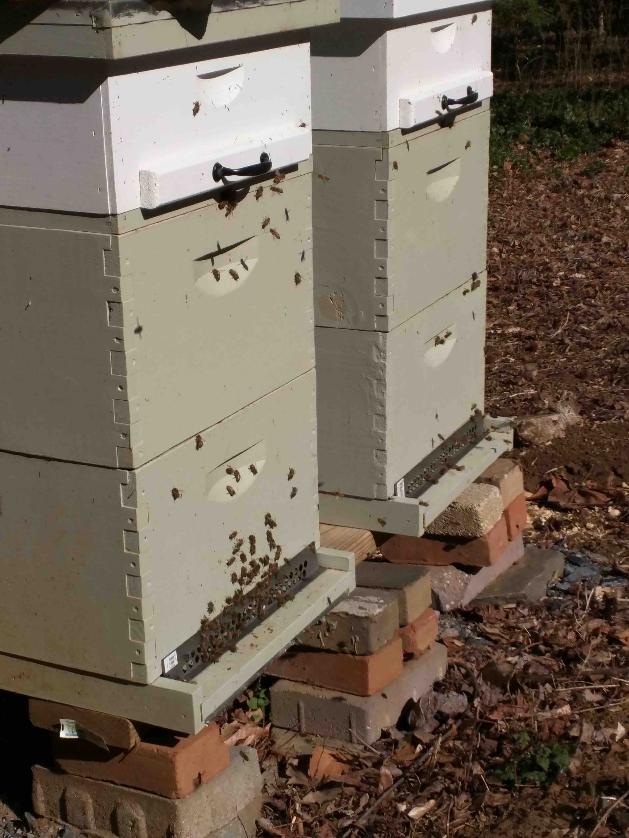
I wasn't quite sure when I could remove the quilt boxes as night-time temps were still going down to freezing.
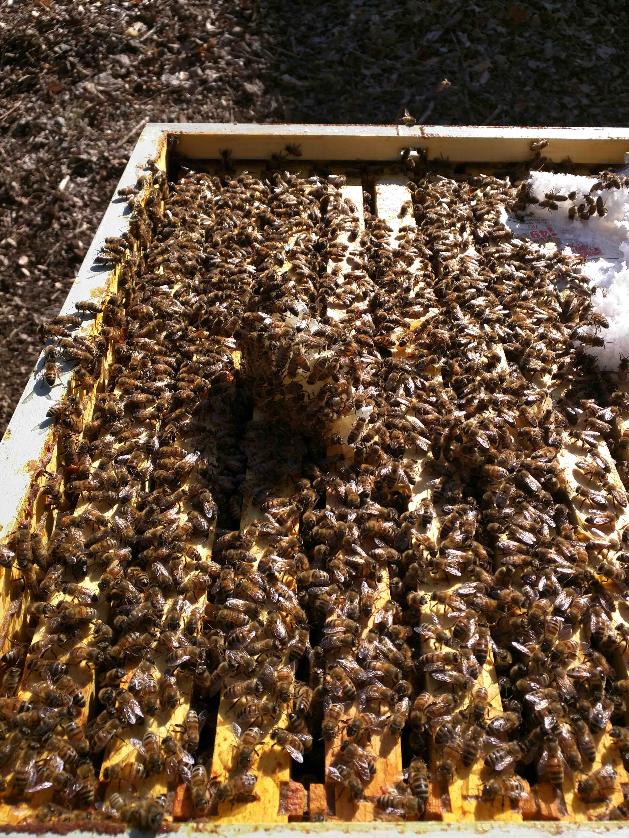
I have read that getting a colony through the winter, can sometimes be the toughest part of beekeeping. As a beginner beekeeper and a veterinarian I was relieved that both of my colonies safely made it through the winter. For me, beekeeping is not just about the honey rather it's about the bees. Animal husbandry is an important topic taught during vet school and beekeeping requires the same care, concern and dedicated work necessary to maintain Holstein cattle used for milk production or a flock of sheep dedicated for wool fleece/clip generation. Purchasing a nucleus colony, putting them in a box, and thinking you don't have to do any work other than harvest a batch of honey every year, will result in nonsuccess. The good news (actually great news), is that it does not take tremendous time to maintain bees; it is detrimental to the colony to interrupt them too often. Once a keeper is experienced and knows what to look for, hive inspections conducted once (sometimes twice) a month may be all that is needed.
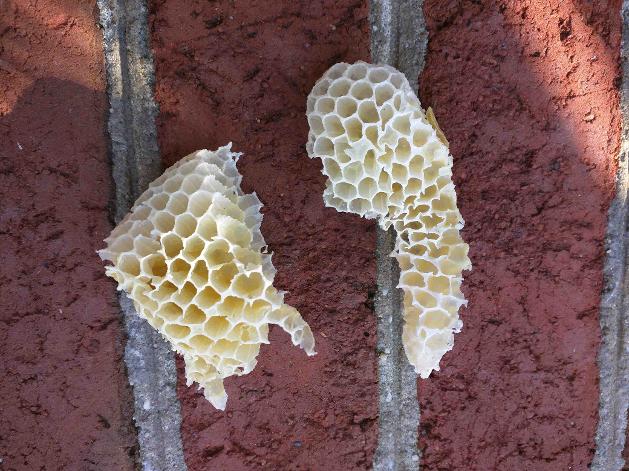
The bees are building new comb on top of the double brood box.
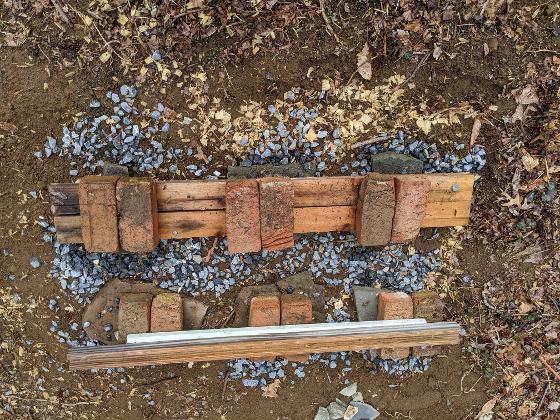
Building a new foundation and hive stand.
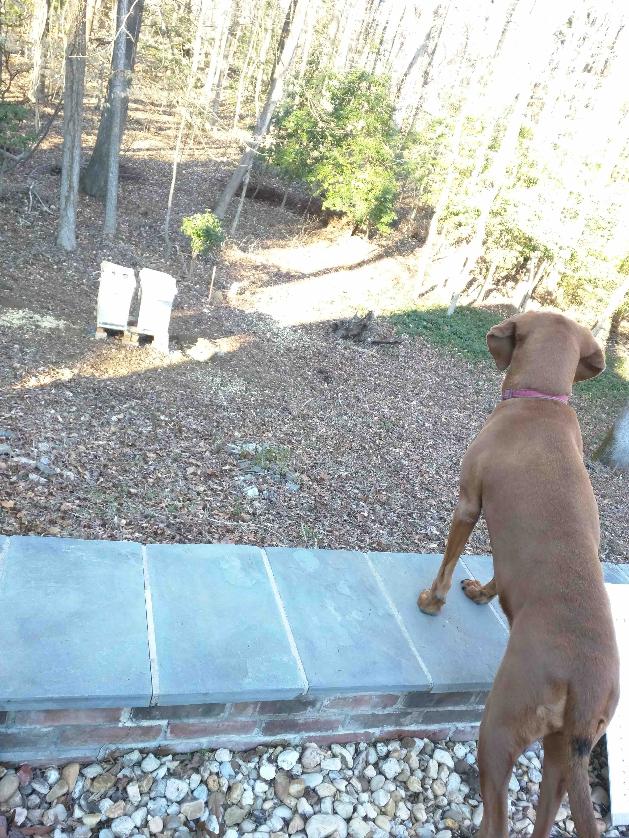
So fortunate that Zee prefers to look at the bees from afar rather than up close!
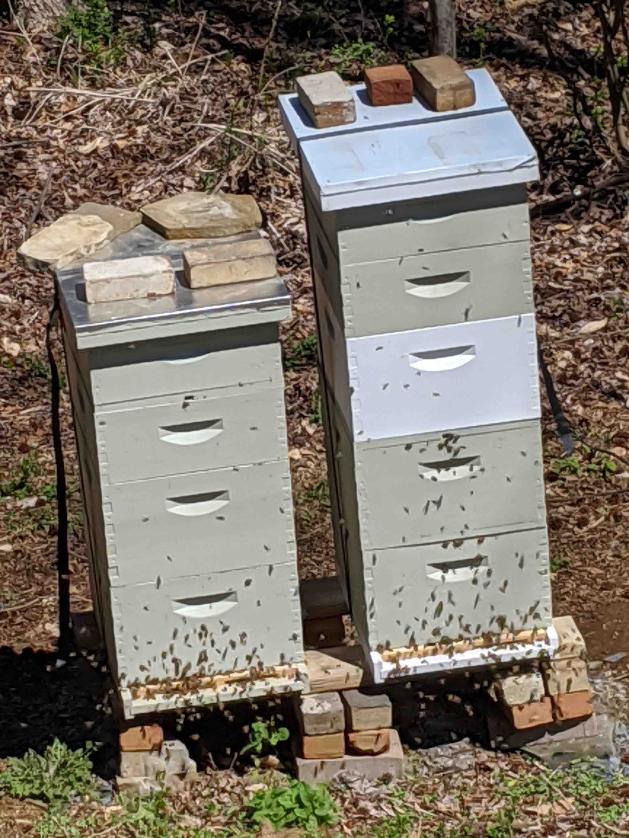
Someone got a bit carried away thinking the bees would forget about swarming, build up and produce a lot of honey so long as there were empty boxes upstairs. Rookie mistake.
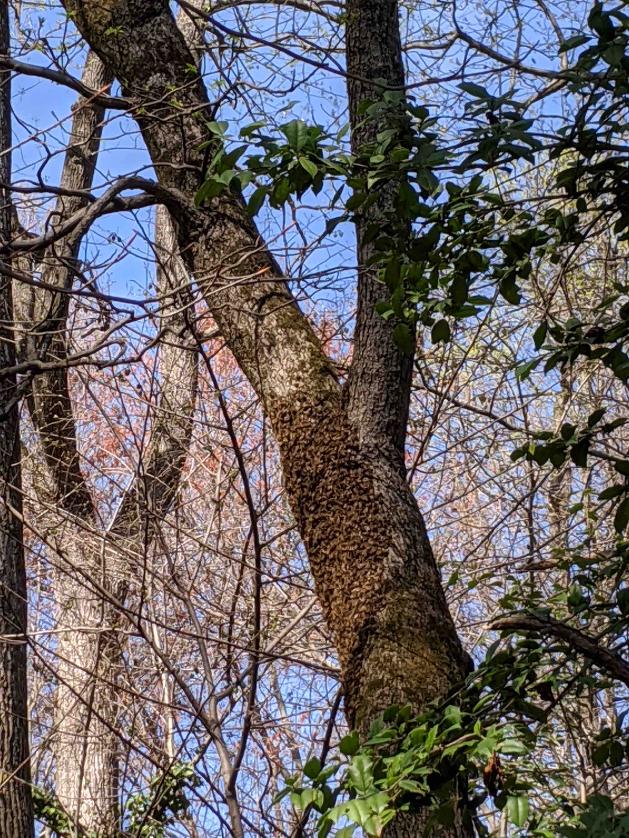
This was swarm #1, a massive swarm that occurred on April 1, 2020. I had not yet performed my first hive inspection of the year as I thought it was too cold to do that. There goes my honey!
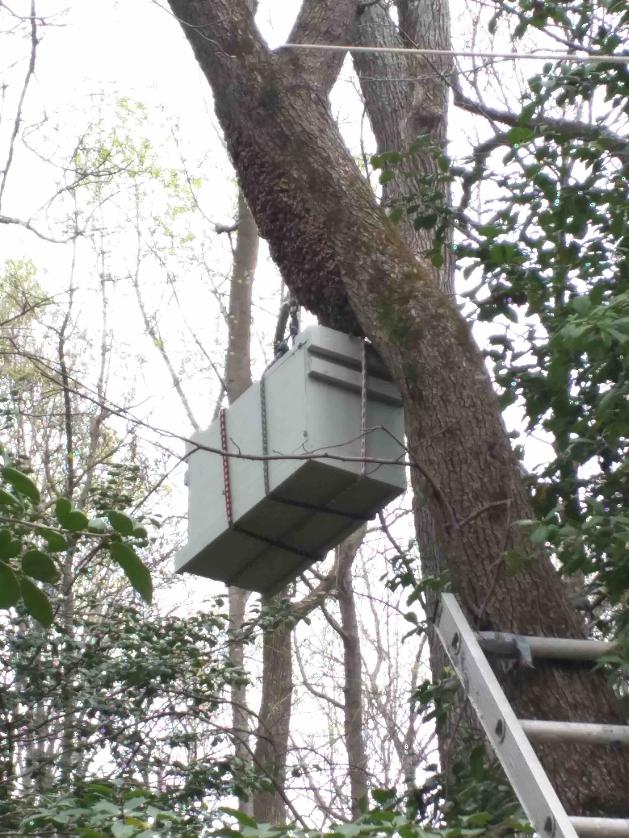
Epic fail. This did not work one bit. The answer to how to deal with a swarm? Prevent it.

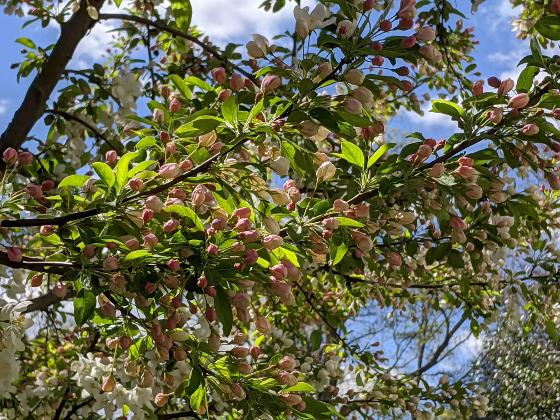
Spring time has arrived and first to bloom in the yard are the pear and crabapple trees. The bees are loving these trees.
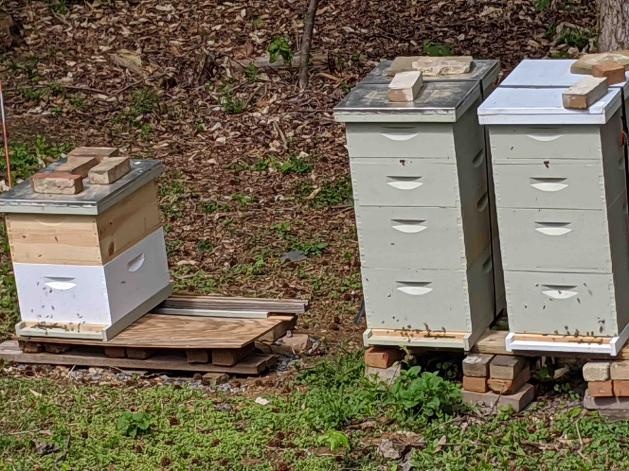
I made a split AFTER swarm #1. This is NOT how a split should be performed but as a beginner I am learning. This first split came from the hive on the right. That same hive swarmed again at the end of the month and by mid-summer had the smallest population of bees amongst the four hives. Sometimes hives can swarm and swarm and swarm (aka 'swarm to death'). Fortunately, that did not happen and next year I'll do my first inspections earlier in the season.
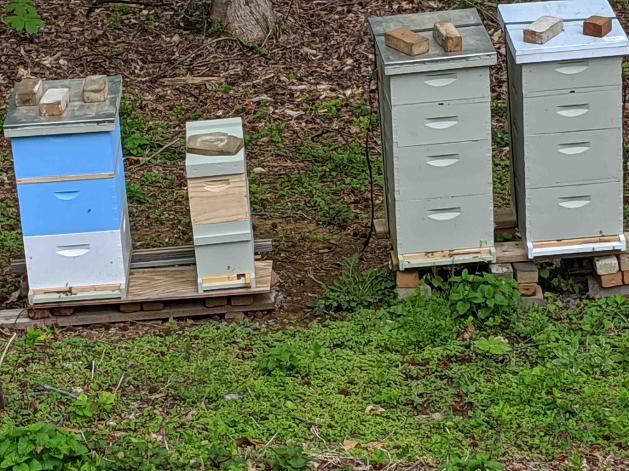
Another split trying to prevent swarm #2. Swarm #2 still occurred. Both of my original hives had numerous (i.e. 12+) newly formed queen cells in them and I learned it's difficult to 'stop' the swarming process once the bees are at this stage. I never intended to have more than two hives. Uh oh.....this apiary is growing rapidly. What will I do next year because I really don't want eight hives! I put 5 swarm cells in the hive on the left......apparently that's too many because that new split then sent off a swarm (swarm #3) not even one month after I made it.
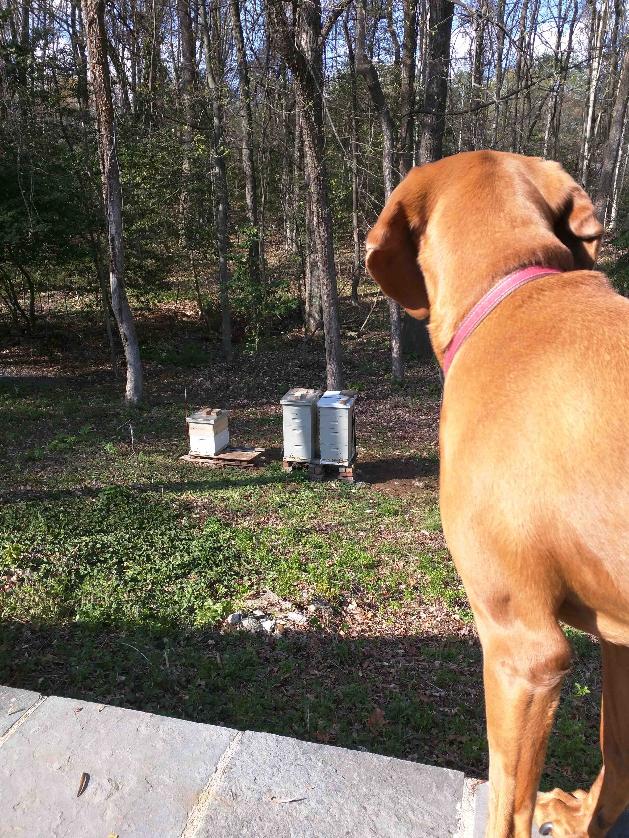
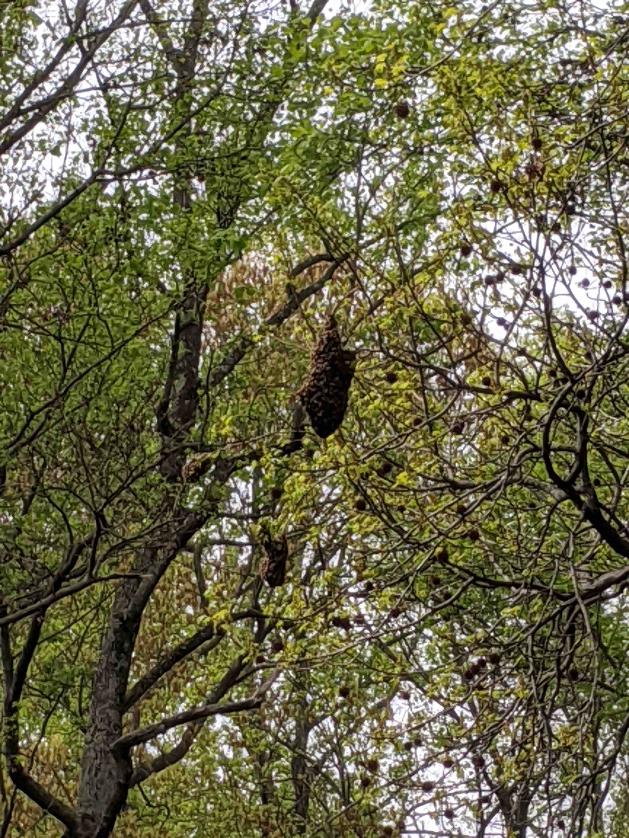
In total, I had five separate swarms this year (that I know of), all during the month of April. It took nearly two months to ensure all four hives were queenright. I'm not sure that there is ever a good time for swarming but having swarms during the spring really dampens honey production.
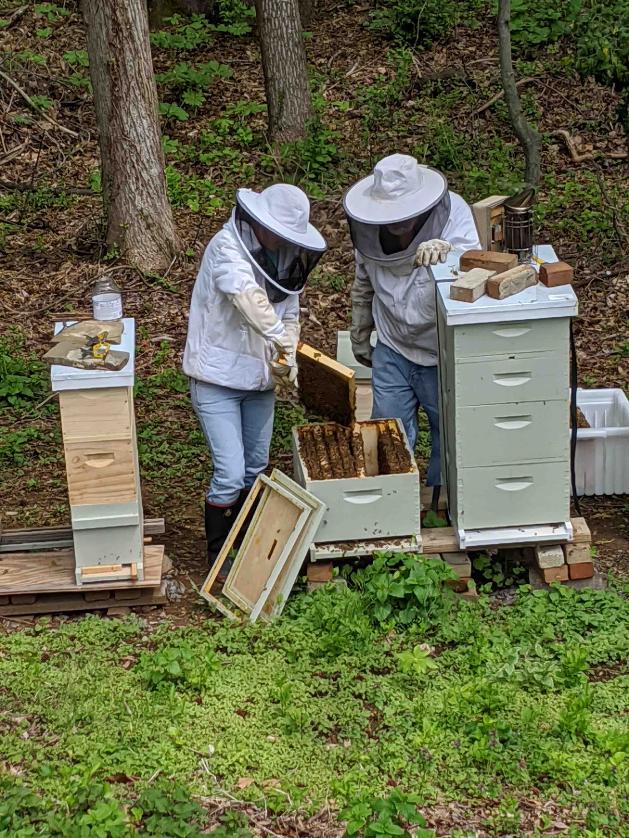
Mentorship is important. Having someone who is experienced, watch you while you work and comment on ways to improve, is incredibly helpful. During this inspection, my mentor reminded me to puff the entrance a couple of times before lifting the lid, to let the bees know I'm entering the hive. He also taught me that I was giving the new splits too much space and that I needed to remove some of the extra boxes with frames until the colonies are big enough to defend that space.
©Copyright ZeesBees.com 2019-2024